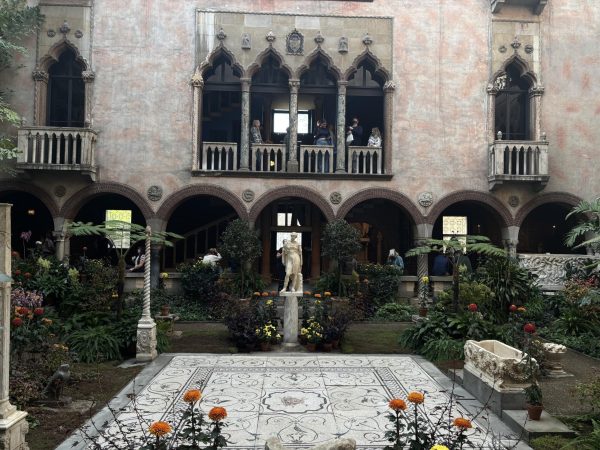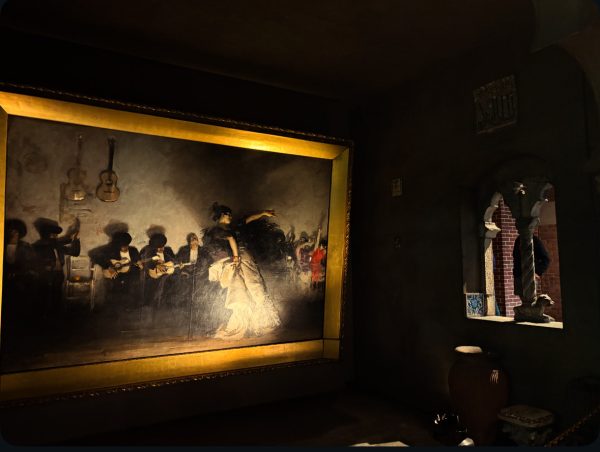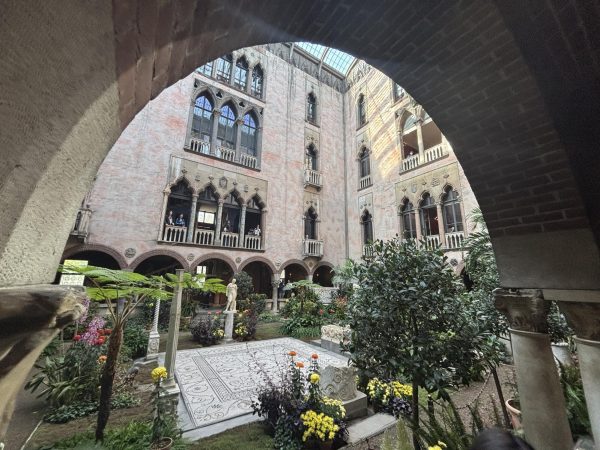
A last-minute weekend trip to Boston had my friends and I creating a quick itinerary on places to visit, and the Isabella Stewart Gardner Museum was on it!
A little bit of History
This Museum caught my eye with its unique scenery and history. Isabella Stewart Gardner (1840-1924) was a wealthy Boston art collector who built this museum after inheriting a large fortune from her father. She lived on the fourth floor, which now houses museum staff offices.
Isabella was deeply involved in art collection after marrying John Lowell Gardner Jr. She was a patron of artists and scholars who was inspired by Charles Eliot, encouraging her to take art collecting seriously.
Isabella had a son who passed away just before his second birthday in 1863 from pneumonia, which led to depression but inspired her and her husband’s extensive travels and art collecting in Europe.
The museum’s structure and designs were influenced by her peers in Venice. Some owned the Venetian Palazzo Barbaro. She had a wide-ranging collection of paintings, sculptures, furniture, decorative arts, and letters with the help of her friend Bernard Berenson.
The museum opened to the public in 1903 while she continued to rearrange her collection until her death in 1924. She willed the museum to the public “for the education and enjoyment of the public forever.”
My Favorite Art Pieces

The Spanish Cloister (designed for El Jaleo — 1882) — included John Singer Sargent’s painting that dramatizes a flamenco performance in southern Spain, which was historically a part of the Muslim Empire. Isabella installed Sargent’s painting behind an arch referencing Islamic architecture. Her taste was certainly impeccable and showed me her understanding of Spain’s history.
The Courtyard — my all-time favorite scenery besides sunsets and glowing stars at nighttime. The courtyard garden is the Museum’s beating heart. Isabella designed The Fenway Court with a glass ceiling to bring in light for potted plants from across the world. The plant display changes seasonally. The courtyard is filled with ancient sculpture, and above all the strong women. The Medusa, one of three ancient Greek sisters from Carthage (modern-day Libya), whose gaze turned men into stone.

Both Roman Mosaic Floor: Medusa, 117-138 CE.
Stone and glass
And Isabella’s throne, 100s CE
Overall, my experience at this museum left me speechless. The countless types of art completely changed my perspective. A woman dedicated her life to just collecting precious art and explained why she picked each one. Isabella was insanely meticulous on where she wanted everything placed and set, and as a visitor, I appreciate and admire her vision. There was too much history from different times, ranging from before she was born until her death. I picked these two favorite pieces because I can see the life she put into designing this museum. I felt something for the very first time in a long time, and in Arabic we call it “haya”.